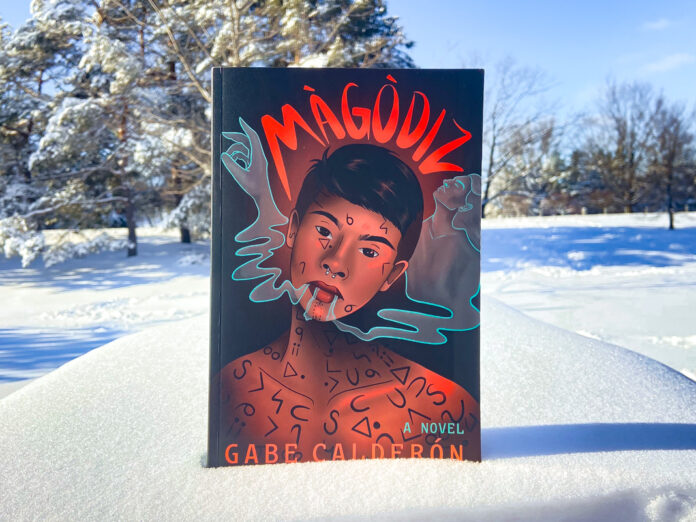
Màgòdiz, written by Carleton alumnus Gabe Calderón, is an intelligent novel that is straight to the point—it aims to teach readers about different elements of Anishinaabe culture and the importance of challenging the status quo.
Once upon a time, people fell out of touch with the world and started abusing the gift of the land. Anger and jealousy broke through and individuals neglected the importance of community. In this post-apocalyptic drama, readers see through the eyes of a group of Màgòdiz—derived from the Anishinaabe term for an individual who resists against their government or ruler—as they explore trust through themes of storytelling, community, family, ceremony and tragedy.
The novel introduces main characters such as A’tugwewinu and Bel, whose backstories begin to slowly intertwine as they reveal why they’ve each chosen to rebel against the social order that has suppressed Anishinaabe lifestyle. They hop from place to place as they avoid the eye of a powerful group, the Madjideye, whose goal is to exterminate diversity, and namely the Indigenous cultures of the area.
After A’tugwewinu and Bel are separated, the novel is narrated by the alternating perspectives of the new people they meet, who focus on saving A’tugwewinu to help her revitalize the practice of storytelling. The newly formed group of scavengers share their stories and set out to infiltrate the Madjideye to retrieve an individual named Shkitagen, who holds an important secret to restoring social order.
As the group of scavengers learn to trust one another, the culture of storytelling is reborn. Sharing the stories of their cultural past provokes new faith in the community and hope for freedom from the Madjideye. The characters compare their cultural differences and find unexpected commonalities, especially when it comes to the importance of individuality and minding the past.
As a storyteller, A’tugwewinu encourages rebellion fighting the Madjideye’s ways and sharing creation stories with as many people as possible. She sparks a renaissance of spirituality and is a reminder of our natural connection to Earth.
Màgòdiz is exciting and relatable. Readers learn about Anishinaabe culture through a futuristic spiritual realm while winding through the characters’ devastating tales of Indigenous suppression and racism. Calderón’s novel enforces the concept of reverting back to two-spirit understandings so everyone can reclaim their identity and find a place in society.
The novel conveys strong historical reference, with emphasis on Anishinaabe two-spirit and storyteller identities. Calderón reimagines ancient stories through A’tugwewinu and highlights the importance of oral storytelling in Anishinaabe culture. While incorporating the main messages of the Anishinaabe stories, Calderón incorporates themes of minority through disability and gender identity prevalent in today’s society.
Calderón’s vision of equality and breaking standards was apparent and thought-provoking. Each character has a unique identity, and many minority groups are represented, allowing readers to see themselves reflected within the pages of the novel. Calderón’s storytelling ability as well as their connections to their Anishinaabe heritage are maximized within Màgòdiz.
Considering the novel contains many characters, Màgòdiz would benefit from a reader’s guide containing the names, pronouns and roles of the characters, as well as a pronunciation chart to help readers navigate many terms that may be new to non-Indigenous readers.
Màgòdiz is written from a narrative and personal point of view that allows the reader to become easily invested in the story. While exposing readers to aspects of Anishinaabe culture, Màgòdiz’s diverse and rebellious nature make it an important read in today’s society.
The writer received a press copy of the book to review.
Featured image by Katelyn Stevenson.





